Four circles of the app, everyone has it!
I started this research in 2017 and I have surveyed 1000+ users and interviewed quite a few to understand their app usage patterns, and their behaviours.

Today we are surrounded by apps, and our life depends on apps. Interestingly every app promises to solve the user’s problem and tries to add some form of ‘value’ to the user’s experience but still, we end up uninstalling apps. The question is if every app solves something for the user, then why do we uninstall it?
I used to have 276 apps on my phone and hence decided to count how many I need. It turned out that I need less than 10% of the apps. Few apps landed in my need bucket and few in want. But every app had its own pattern of my usage. Some I was using daily, few weeks and a few apps a few times in a month and I am sure this might be true for others as well. Lots of apps I used a few times, few I just kept on the phone or end up uninstalling. Now if I look at every app that tries to solve our problem, then why do I end up uninstalling them? As the number of apps is increasing, many companies seem to be striving hard to catch up but are missing the underlying thought process.
A few questions I kept asking were:
“Why I’m not using 90%?”
“What’s wrong with them?”
“Why am I keep going back to 10%?”
276 vs 10% > Trigger
I decided to research ‘app usage patterns with the objective of understanding “what it takes to design or build an app which people would like to keep on their phone and use it.”
Understand app usage patterns - qualitative
To begin with, I spoke to 8 friends in person to understand their app behaviours. I tried to understand:
Style of usage
Emotions
Motivations
Usage patterns
Types of apps they have in their phone
How often they use
Why and when they uninstall the app
What kinds of app they use when the emotions are substantial and why.
I gave each one an exercise
Count the total number of 3rd party apps you:
have installed in your phone excluding system apps.
use daily.
use weekly, excluding daily apps.
use monthly, excluding daily & weekly apps.
What motivates them to come back to the app.
What triggers to installation of the app?
What’s a trigger for uninstalling?
Age group
These conversations gave me exciting insights. I noticed a pattern that the value of an app changes over time. Sometimes an app can become a need, and after the same time, the same app changes to a want.
I felt these insights weren’t enough, so I decided to gather more data about usage patterns and planned quantitative research to collect more data to validate.

Mobile apps are an integral part of a consumer’s overall digital experience and customer journey; in fact, 90% of all mobile time is taking place in mobile apps alone.”
Survey & exercise - quantitative
I planned a survey along with an exercise that was rolled out to around 1300+ people in two countries (India and Singapore). 289 people responded. It was essential for people to do the task and then based on the exercise they need to fill the survey. The survey included quantitative + qualitative questions. The survey questionnaire was made in such a way that it had quantitative and qualitative questions. Getting qualitative data is hard through a survey because of its remote nature, the time it takes, and one cannot adequately express their true motivations/emotions, but I wanted at least a few keywords that can provide me with some profound insights.
Exercise:
Count the total number of 3rd party apps you have installed on your phone excluding system apps.
Count the total number of 3rd party apps you use daily.
Count the total number of 3rd party apps you use weekly excluding daily apps.
Count the total number of 3rd party apps you use monthly excluding daily & weekly apps.
This exercise gave me the number. Next step was to understand these:
What motivates them to come back to the app.
What triggers to install of the app?
What’s a trigger for uninstalling?
Age group
Survey findings
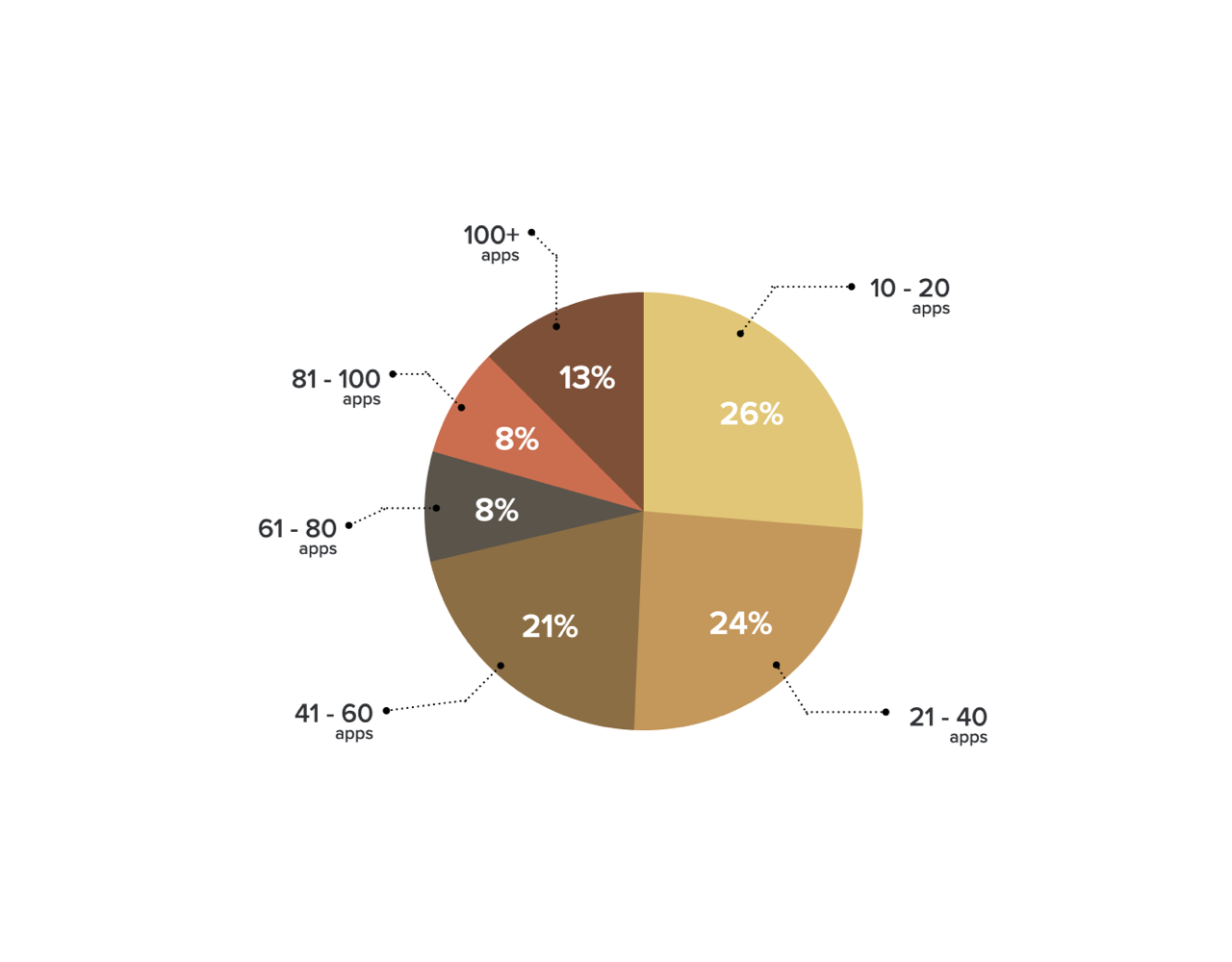
3rd party apps installed on the phone?
It’s an agency model which works in a shared studio. This option was out because there is hardly any collaboration with a cross-functional team.
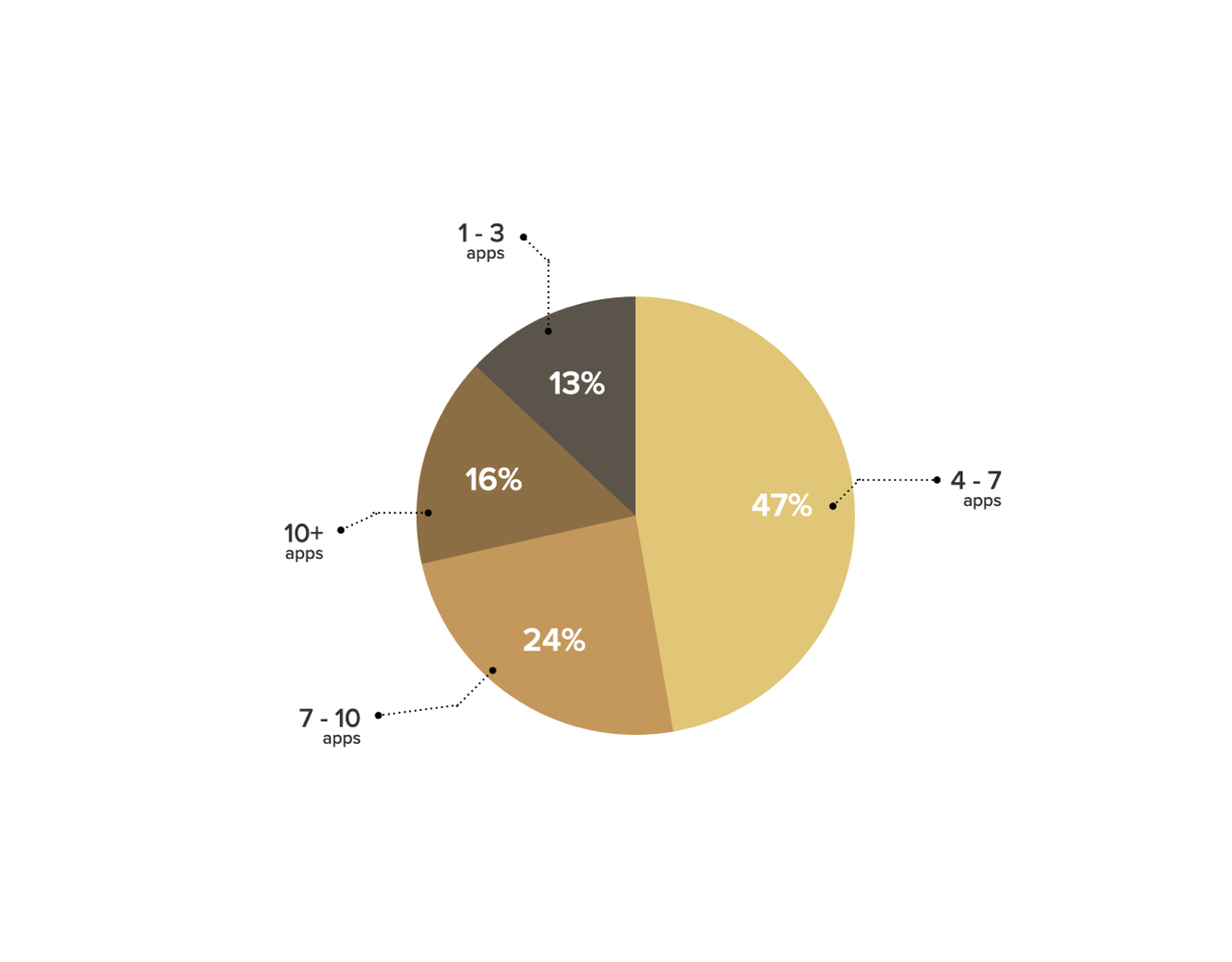
How many apps do people use daily?
Results show 4-7 apps people use every day which was a mix of communication, food, email, social etc.
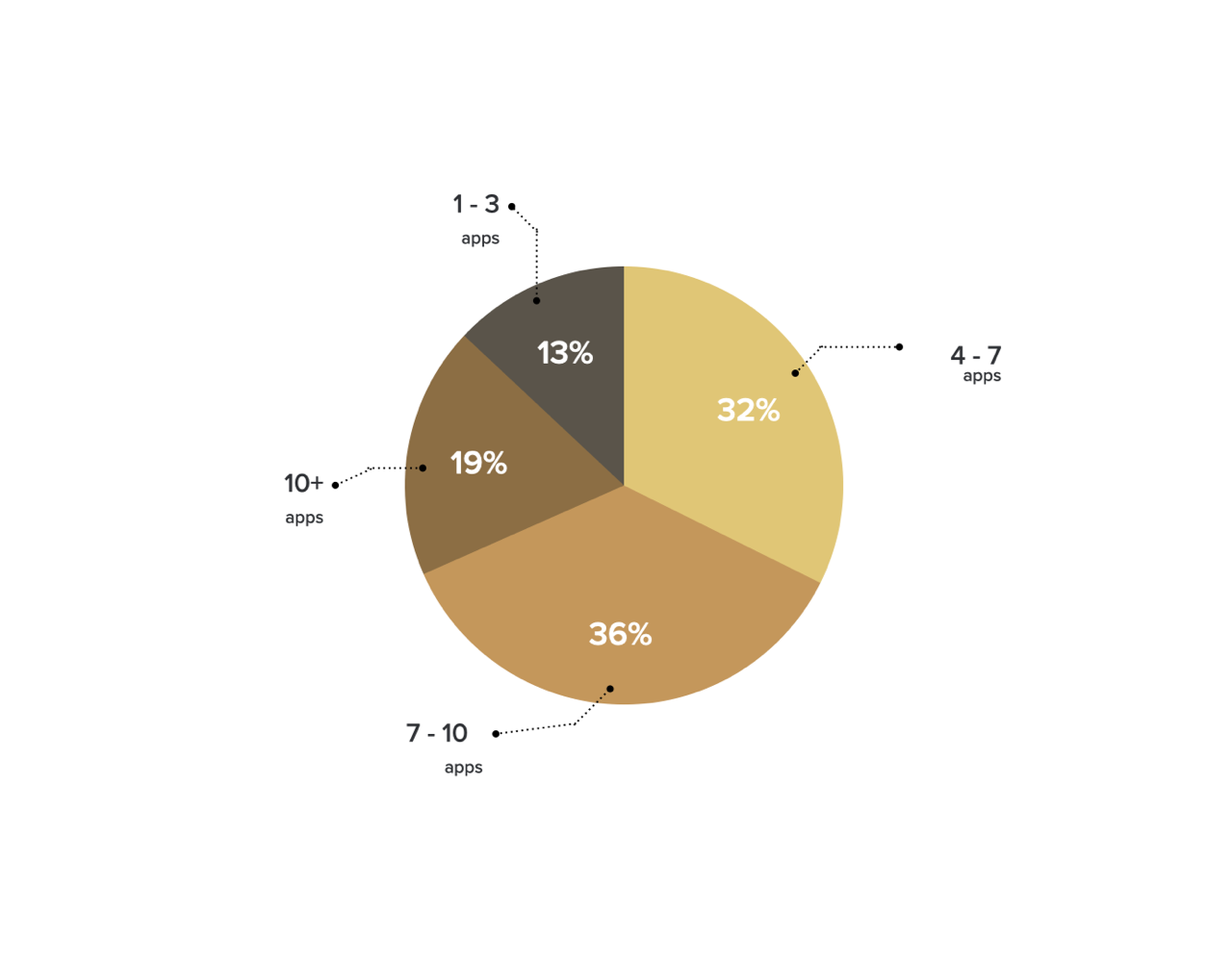
How many apps do people use once a week?
People use 4-7 apps which are mostly around banking, content-driven apps like Linkedin etc.
Excluding daily apps

How many apps do people use once/twice in a month?
1 - 3 was a surprise. For some, it was the banking and for some, it's something related to 'passion' which they use in their free time. e.g. traveling
Excluding daily & weekly apps
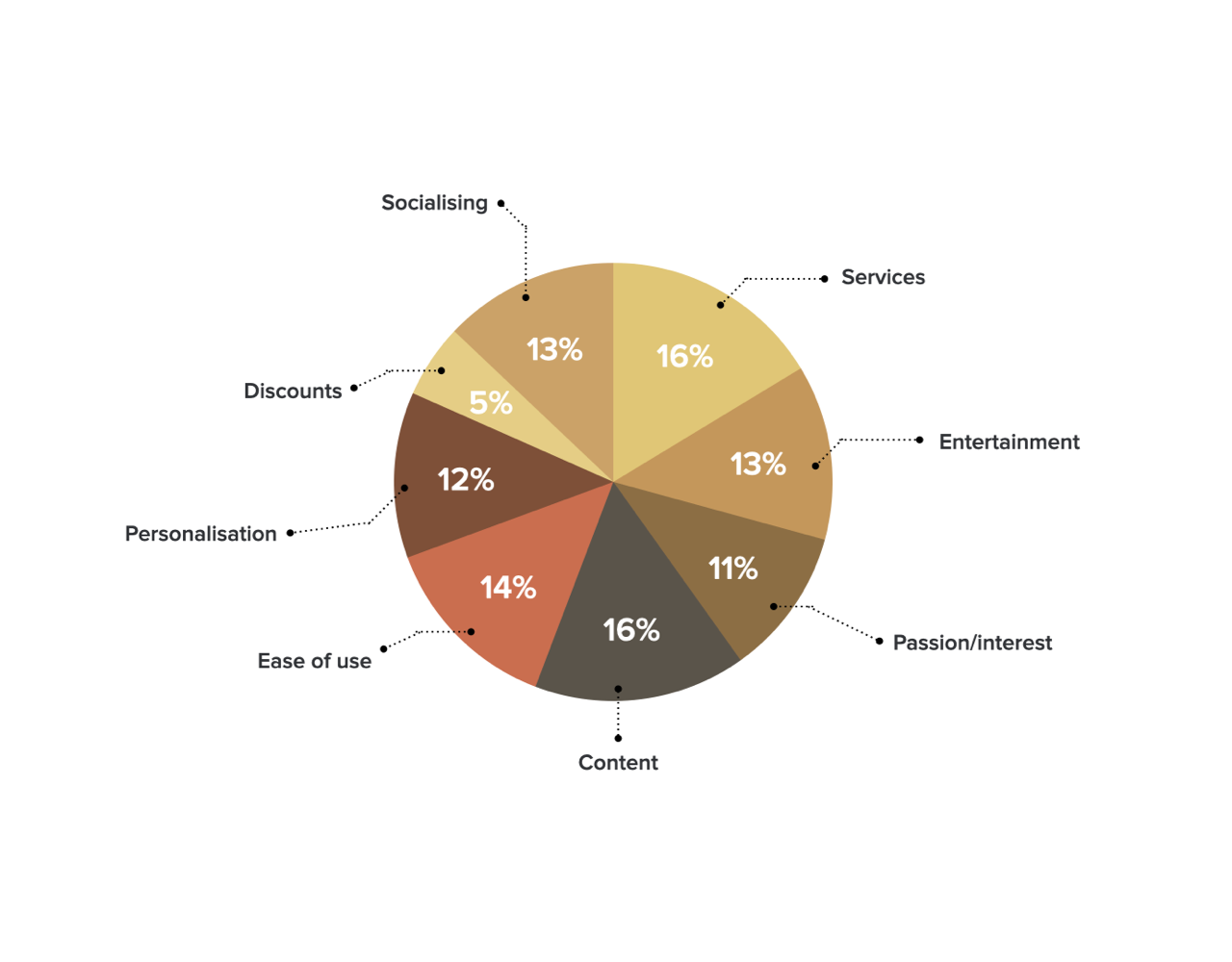
What motivates people to come back to the app?
Content (data) & services are key motivators.
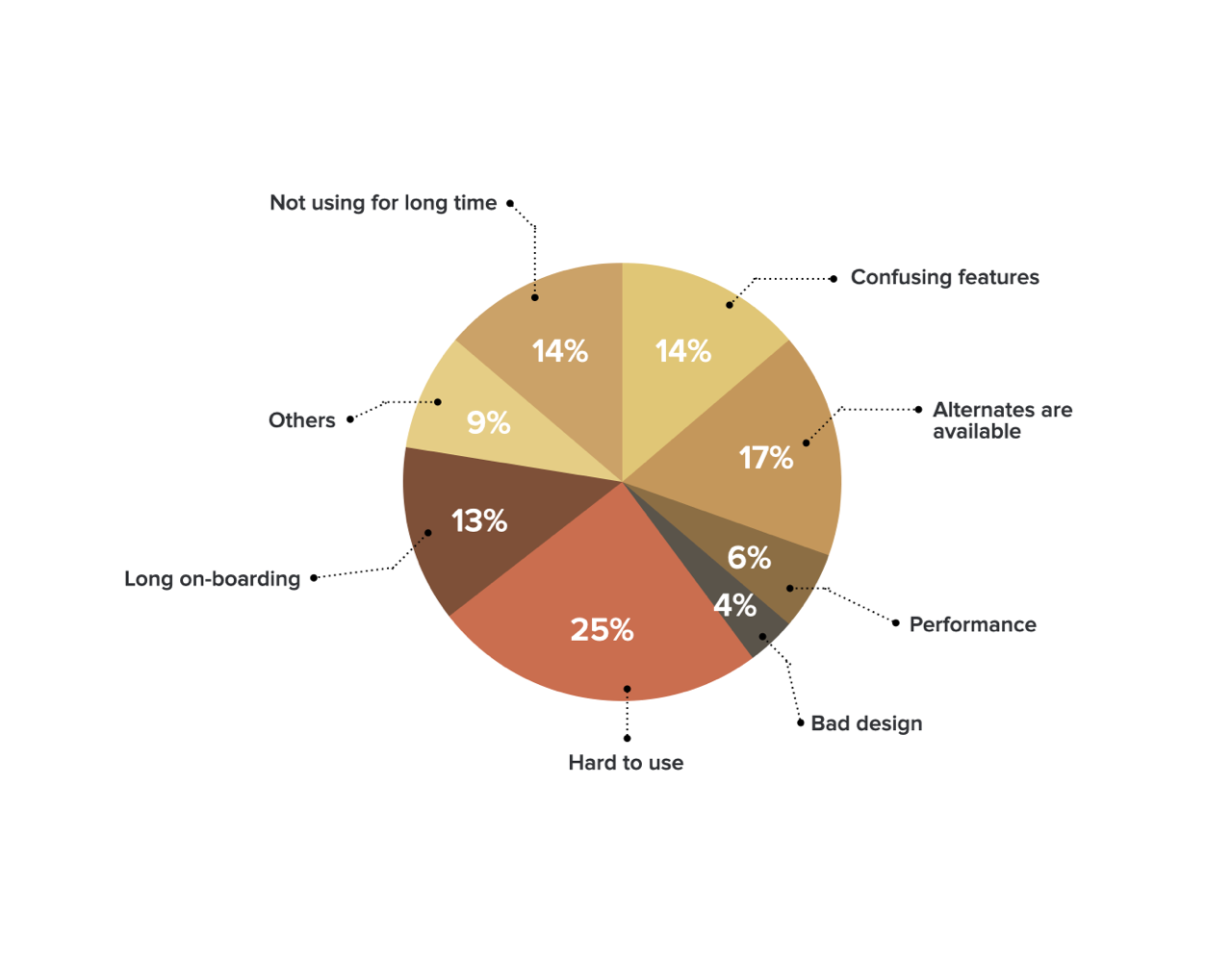
What triggers uninstall the app?
Performance, lousy usability & design are the key triggers for uninstall.

Age groups
Pesearch was performed on corporate employees. I'm planning to extend this to the non-power users soon.
Research synthesis - Four circles of app
Based on the results, I began to believe that there are four circles of apps on our phones, and every app fits in one. The circle is not a folder which we create on the phone, but a virtual one based on your usage patterns.
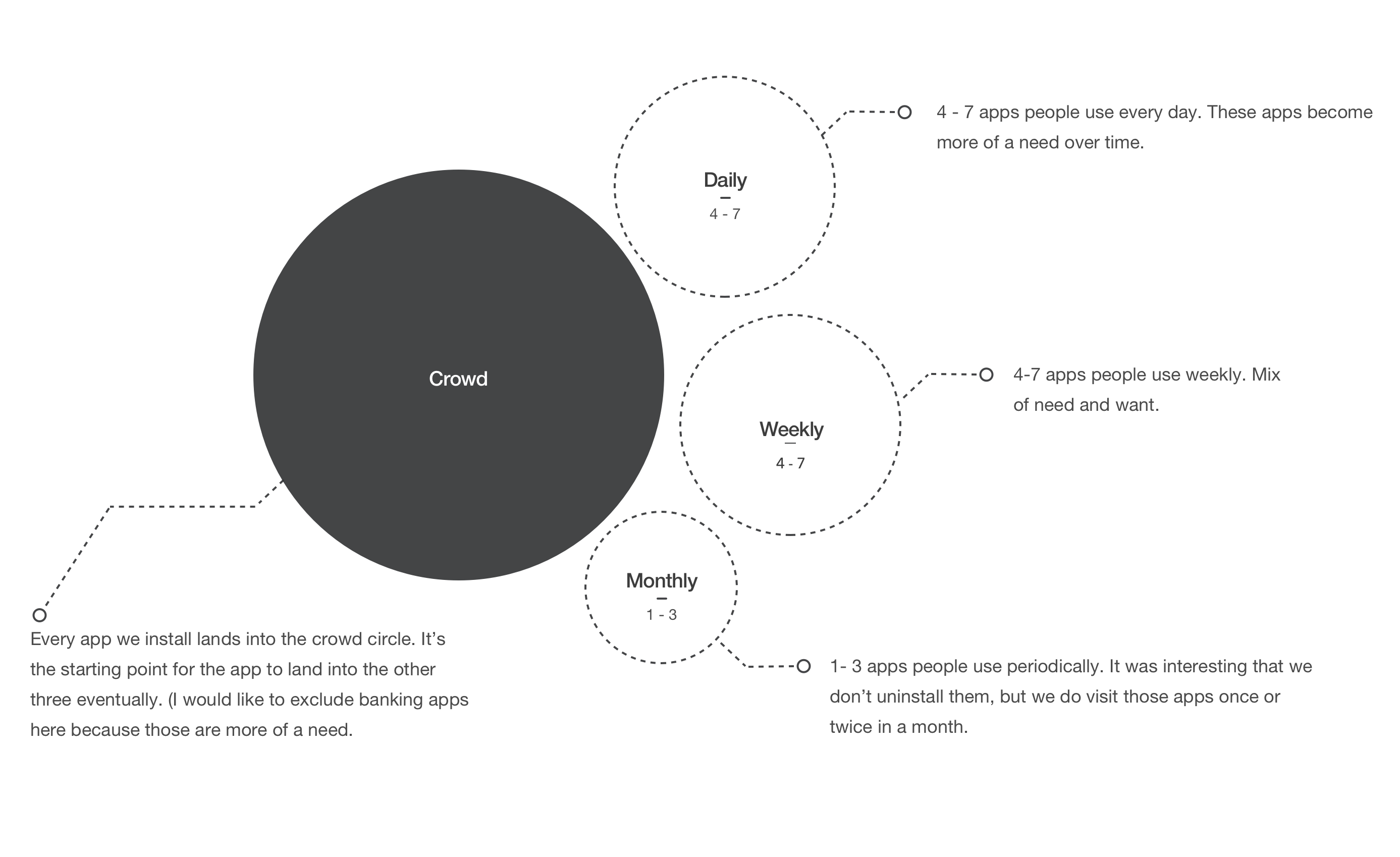
Research showed that daily and weekly apps were mostly needed for communication, food, finance, etc. Monthly was different; most of them were interest and passion-driven apps. These apps differ from social media apps like Facebook, Instagram, or Twitter.

Value of the app changes over time."
Note - I'm still working on this research. I'll be updating this with final findings and insights.
